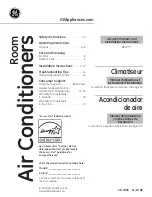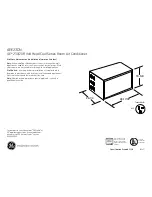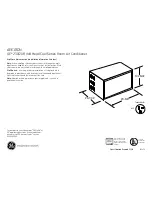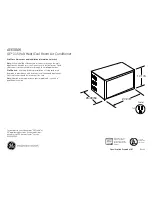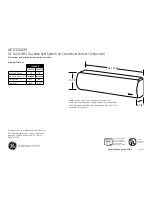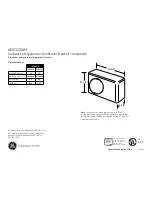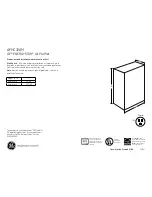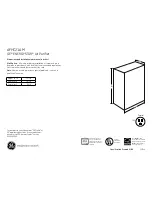
55
Service & Maintenance
Compressor Operational Sounds
Because of the scroll compressor design, it emits a higher
frequency tone (sound) than a reciprocating compressor. It
is designed to accommodate liquids, both oil and refriger-
ant, without causing compressor damage. The following dis-
cussion describes some of the operational sounds that dif-
ferentiate it from those typically associated with a recipro-
cating compressor. These sounds do not affect the opera-
tion or reliability of the compressor.
At Shutdown:
When a scroll compressor shuts down, the gas within the
scroll expands and causes momentary reverse rotation until
the discharge check valve closes. This results in a “flutter”
type sound.
At Low Ambient Start-Up
When the compressor starts up under low ambient condi-
tions, the initial flow rate of the compressor is low due to the
low condensing pressure. This causes a low differential
across the thermal expansion valve that limits its capacity.
Under these conditions, it is not unusual to hear the com-
pressor rattle until the suction pressure climbs and the flow
rate increases.
Scroll Compressor Replacement
Table 12 lists the specific compressor electrical data and
the circuit breaker operating ranges.
The compressor manifold system was purposely designed
to provide proper oil return to each compressors. The refrig-
erant manifolded system must not be modified in any way.
Note: Altering the manifold piping may cause oil
return problems and compressor failure.
Should a compressor replacement become necessary and
a suction line filter drier is to be installed, install it a mini-
mum of 18 inches upstream of the oil separator tee. Refer
to the illustration in Figure 18.
Anytime a compressor is replaced, the oil for each com-
pressor within the manifolded set must be replaced.
The scroll compressor uses
Trane OIL-42 without substi-
tution
. The appropriate oil charge for a 9 and 10 Ton scroll
compressor is 8.5 pints. For a 14 and 15 Ton scroll com-
pressor, use 13.8 pints.
Note: Do Not release refrigerant to the
atmosphere! If adding or removing refrigerant is
required, the service technician must comply with
all Federal, State and local laws. Refer to general
service bulletin MSCU-SB-1 (latest edition).
Note: Refrigerant oil is detrimental to some roofing
materials. Care must be taken to protect the roof
from oil leaks or spills.
Figure 18
Suction Line Filter/Drier Installation
Summary of Contents for IntelliPak CG-SVX02B-EN
Page 10: ...10 General Information Module Mounting Locations Screw Hole...
Page 12: ...12 Figure 1 Typical Installation Clearances for Single Multiple or Pit Applications...
Page 13: ...13 Figure 2 C20 Ton Unit Dimensional Data Recommended Clearances...
Page 14: ...14 Figure 2 C25 Ton Unit Dimensional Data Recommended Clearances...
Page 15: ...15 Figure 2 C30 Ton Unit Dimensional Data Recommended Clearances...
Page 16: ...16 Figure 2 C40 Ton Unit Dimensional Data Recommended Clearances...
Page 17: ...17 Figure 2 C50 Ton Unit Dimensional Data Recommended Clearances...
Page 18: ...18 Figure 2 C60 Ton Unit Dimensional Data Recommended Clearances...
Page 35: ...35...
Page 36: ...36 Figure 12B Typical GBAS 0 5 Volt Connections Diagram...
Page 37: ...37...
Page 38: ...38...
Page 63: ...63...
Page 64: ......




























